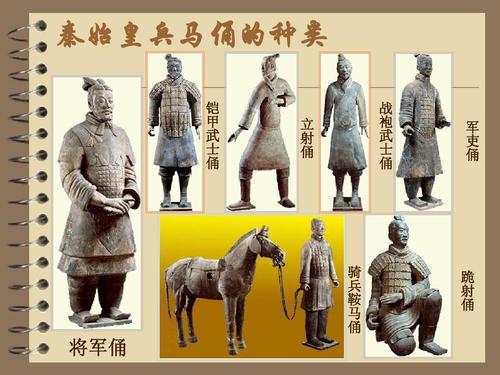
Are there different types of Terracotta Warriors?
While the term "Terracotta" itself refers to a type of baked clay, the Terracotta Army figures are not categorized into different "types" in the way your prompt describes for tiles. The variation among the Terracotta Warriors lies in their roles, ranks, and individual characteristics, not in the material difference.
Variations in the Terracotta Army
Instead of "types" of Terracotta, let's explore the fascinating variations found within the ranks of the Terracotta Army:
-
Infantry: These are the most numerous figures, representing the backbone of the Qin army. They are further distinguished by their attire and weaponry, with some carrying swords, spears, or crossbows.
-
Archers: Kneeling and standing archer figures showcase the army's ranged combat capabilities. These figures are easily identifiable by their ready stances and quivers of arrows.
-
Charioteers: These figures are often depicted in a three-man team: a driver, a lancer, and a commander. The chariots themselves are intricate works of art, complete with horses and detailed bronze ornamentation.
-
Cavalry: These figures demonstrate the importance of mounted warfare in the Qin army. The cavalrymen are typically depicted holding reins and weapons, ready for battle.
-
Commanders and Generals: Distinguished by their elaborate armor, headgear, and sometimes even facial hair, these figures represent the leadership of the Terracotta Army.
-
Non-Combatants: The army also includes figures like musicians, acrobats, and officials, suggesting the presence of a complex support system accompanying the soldiers.
Individuality and Realism
Beyond these broad categories, the true wonder of the Terracotta Army lies in the individualization of each figure.
-
Unique Faces: Each warrior has a distinct face, believed to be modeled after actual soldiers, showcasing a wide array of facial features, expressions, and even hairstyles.
-
Rank and Attire: Variations in clothing, armor, headgear, and weaponry meticulously illustrate the different ranks and roles within the Qin army.
-
Life-Size Scale: The figures are life-sized, further enhancing the realism and emphasizing the sheer scale of Emperor Qin Shi Huang's vision of an eternal army.
FAQs
1. Were the Terracotta Warriors molded from the same type of clay?
While the exact composition of the clay may have varied slightly, all the Terracotta Warriors were crafted from clay sourced in the area surrounding the mausoleum, ensuring a degree of uniformity in the material.
2. Are the Terracotta Warriors painted?
Yes, originally the Terracotta Army figures were painted in vibrant colors to enhance their realism. However, much of the paint has flaked off over centuries of burial.
3. Why was the Terracotta Army created?
The Terracotta Army was created to accompany the first Emperor of China, Qin Shi Huang, in his afterlife. The army was intended to protect him and ensure his continued rule in the next world.